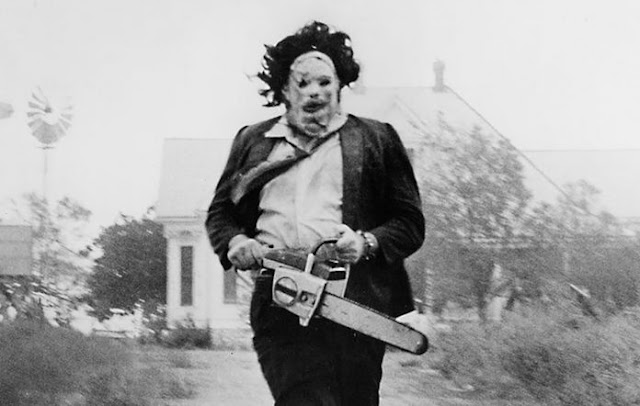I can't understand why people who keep making these films just don't understand why the first one is a classic--an absolute landmark in horror. The film students who made the 1974 original weren't trying to make Leatherface some kind of antihero with an Oedipal complex with super-human strength and countless chainsaw trick shots. They were just trying to make a terrifyingly real film about a woman being held captive and tormented by a crazy family in the middle of nowhere. No context. No backstory. No sympathetic tone for Leatherface. Just a story about someone trapped in a bizarre situation that no one would want to be in.
For some reason the various remakes that have emerged since 2003's The Texas Chainsaw Massacre decided to make Leatherface increasingly sympathetic, and as one of my friends put it, something akin to a Marvel supervillain. The movie gave Leatherface a name, a backstory, a ton of family context, a career, an overly sculpted mask and even some kind of face disease that ate his nose. Subsequent films went even further down the rabbit hole, like Texas Chainsaw 3D (2013), which dug even deeper into stupidity, gave him escape tunnels under the house, and a beautiful cousin/accomplice whom he hasn't seen since she was a baby. 2006's Texas Chainsaw Massacre: The Beginning and 2017's Leatherface were nothing but backstory.
Part of the reason these movies just don't hit like the first is they're trying too hard. Providing too much context for the killer is an enormous mistake in a slasher film because it humanizes the villain and takes the viewer out of the perspective of the victim. The victims in the remakes are mostly vacuous and generally unlikable characters; Leatherface is presented as a cunning and powerful tool of vengeance against society, so it's hard no to root for him. He is, essentially, the protagonist, defending the tranquility of his isolated home against invaders.
The original film is a relentless tale of isolation, terror and survival. The remakes are tales of a butcher with learning disabilities just trying to live his life but kids keep showing up at his house and killing his relatives.
All the remakes are terrible. But this Netflix film is uniquely terrible.
First it is as low-brow as it is pretentious. The film lampoons rural southerners and urbane millennials alike, culminating in the unbelievably cringe-inducing "party bus scene" that might be the dumbest moment in all of horror. But it also tries to shoe-horn this socially conscious stuff about confederate flags, racism, school shootings, carbon emissions and gentrification all in the first act. The writers were clearly working overtime to make the film feel "relevant" to millennials but I think failed to get any particular perspective across, so one is left wondering what the point of it all was.
It is also as derivative as it is predictable. Seeing the success of the latest Halloween trilogy, they stole the idea of making the original female protagonist the villain's now-militant foil. They also needlessly stole the villain's mother obsession from Friday the 13th. Lazy screenwriters simply borrowing ideas from other popular horror films is bad enough, but the writers created a final battle so predictable in it's "twists" that anyone that has seen a horror film could easily write every scene out ahead of time. You know the drill: protagonist loses vital weapon in battle, then friend saves protagonist at last moment only to pay with her life, etc. This kind of stuff just goes on an on through the third act.
That's not to say the film isn't entertaining. It is fast-paced, bloody and has some clever shots and situations. In particular, having one of the protagonists stuck in the house with Leatherface while he is butchering her friends, unaware of her presence, holds the viewer in the action and keeps the suspense high, because you KNOW he's going to find her eventually.
Take a look at this photo below. Compare it with the photo at the top. To me, these two publicity shots epitomize the differences between the 2022 film and the 1974 original. One is of a blood-soaked super villain avenging his adopted mother on a neon-lit party bus. The other is of an unknown assailant wearing an unknown woman's face and hair, dressed in a coat and tie because he likes to wear his Sunday best when he's hauling ass down a dusty farm road to slice you into tiny pieces for the pure enjoyment of it. You'll never know why. You'll never know whose face he's wearing, how many he's butchered or why he hasn't been caught. He just IS.
If we're going to keep getting new TCM films, they should go back to the roots. The producers of the first film created something atmospheric, intense and grounded in gritty realism. They did it by studying the real-life horrors created by serial killers Ed Gein in the 1950s and Dean Corll in the early 1970s. Someone wanting to create a really good TCM movie should probably watch some true crime documentaries for inspiration. But honestly, do we really need another one?











